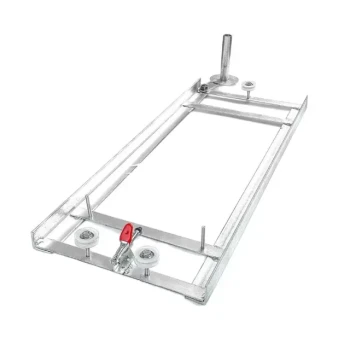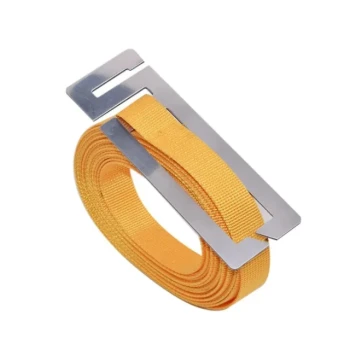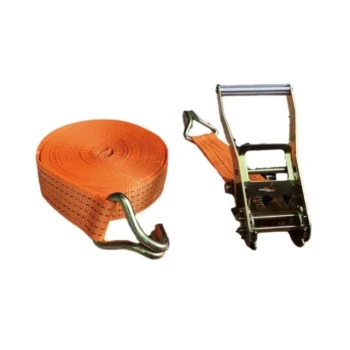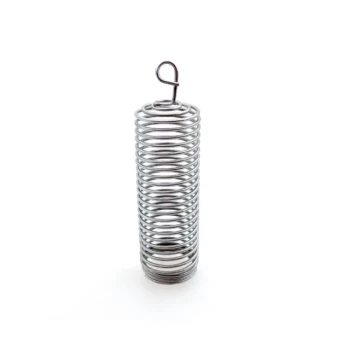To place a queen cell into a nucleus hive, you must first create space by removing a side comb. Then, carefully make a small depression in the face of a central brood comb and gently press the plastic base of the queen cell into the wax, ensuring it is secure and oriented correctly within the queenless colony.
The core issue is one of terminology. Your question can refer to two distinct beekeeping tasks: the precise act of introducing a single queen cell, or the more common process of transferring an entire nucleus colony into a larger hive. Understanding which procedure you need is the key to success.
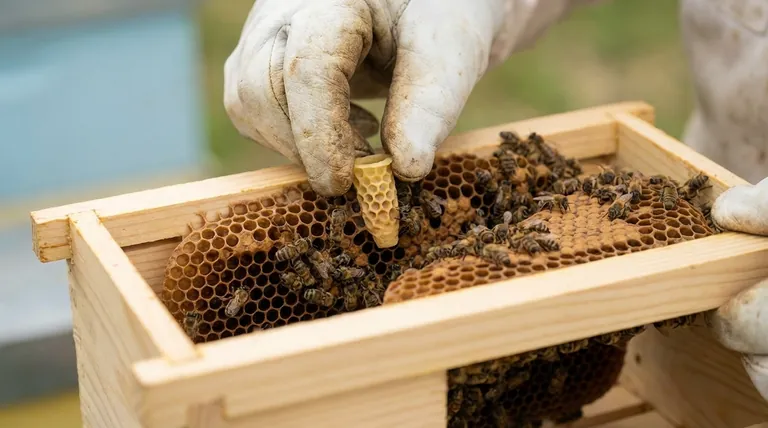
Procedure 1: Placing a Queen Cell into a Nucleus Hive
This procedure is used when you need to introduce a new, unhatched queen into a queenless nucleus colony. The goal is for the colony to accept, protect, and hatch the new queen.
Prepare the Nucleus Hive
First, gently open the nucleus hive. To give yourself room to work without damaging the delicate queen cell, remove one of the outer frames that contains honey or is mostly empty. Set it aside carefully.
Prepare the Brood Comb
Select one of the central frames that contains brood (eggs and larvae). This is the warmest part of the hive and where the bees will give the cell the most attention.
Using your thumb or a hive tool, press a shallow depression into the surface of the comb. This indent should be just large enough to securely hold the base of the queen cell.
Insert the Queen Cell
Handle the queen cell with extreme care, touching only the plastic base or the hard wax at its top. The sides of the cell are fragile.
Gently press the plastic base of the cell into the depression you made on the comb. Ensure it is firmly seated so it will not fall off. The cell should be pointing downwards, just as it would hang naturally.
Procedure 2: Transferring a Nucleus Colony into a Full Hive
This is the far more common task for new beekeepers. It involves moving a small starter colony (the "nuc") from its temporary box into a permanent, full-sized hive body.
Prepare Your Equipment and Location
Before you begin, have all your equipment ready at your chosen hive location. This includes a complete hive (bottom board, hive body, frames, inner cover, and outer cover), your smoker, a hive tool, and your protective gear.
It's best to have the new hive body pre-filled with the required number of frames. For a standard 10-frame hive, you will transfer 5 frames from the nuc and add 5 new frames.
Open and Smoke the Nucleus Box
Apply a few gentle puffs of smoke to the entrance of the nucleus box and then under its cover once you lift it. This helps calm the bees and encourages them to move away from the top bars, making the frames easier to remove.
Transfer the Frames in Order
Use your hive tool to gently pry the frames loose, as they will be stuck together with wax and propolis.
Lift out the first frame from the nuc box and place it into the center of the new, larger hive body. Continue transferring the remaining frames one by one, keeping them in their original order.
Maintain the Brood Nest Integrity
Maintaining the original order of the frames is critical. The bees organize their hive with the brood (developing bees) in the center, surrounded by a ring of pollen and then honey on the outer edges. Disturbing this "brood nest" structure creates unnecessary work and stress for the colony.
Add Remaining Frames and Bees
Once the nuc frames are centered in the new hive, add your new, empty frames to fill the remaining space on either side.
Finally, hold the now-empty nuc box upside down over the new hive and give it a firm shake or tap to dislodge any remaining bees into their new home.
Close Up the Hive
Place the inner cover and the top cover on the hive. To help the smaller colony defend itself in its new, larger space, install an entrance reducer set to the smallest opening.
Understanding the Trade-offs and Pitfalls
Successfully managing a hive requires understanding the impact of your actions. Both procedures have potential risks if performed incorrectly.
The Risk of a Damaged Queen Cell
A queen cell is extremely fragile. Mishandling can kill the developing queen. Never shake a frame that has a queen cell on it, and only hold it by its reinforced base.
The Importance of Frame Order
When transferring a nuc, placing the frames out of order forces the bees to reorganize their entire nest. This is a significant setback that slows down the colony's growth and can stress the queen.
The Danger of Chilled Brood
Brood must be kept at a consistent, warm temperature. Perform these manipulations on a calm, warm day (above 65°F / 18°C) and work efficiently to minimize the time the frames are outside the hive.
The Critical Need for a Queenless Colony
You can only introduce a new queen cell to a colony that is truly queenless. If a queen is already present, the bees will destroy the new cell immediately.
Matching the Method to Your Goal
Your next step depends entirely on your objective. Be clear about what you are trying to accomplish before you open the hive.
- If your primary focus is introducing a new queen: You are performing the delicate task of inserting a single queen cell into the brood nest of a queenless colony.
- If your primary focus is moving a starter colony into a permanent home: You are transferring all the frames from the nucleus box into a larger hive body, keeping them in their original order.
Knowing the difference between these two fundamental tasks is a crucial step in becoming a capable and confident beekeeper.
Summary Table:
| Procedure | Primary Goal | Key Action | Critical Detail |
|---|---|---|---|
| Placing a Queen Cell | Introduce a new queen | Secure a single cell into a brood comb | Colony must be queenless; cell is fragile |
| Transferring a Nucleus | Move a starter colony to a permanent hive | Transfer all frames, keeping their order | Maintains brood nest integrity; reduces stress |
Ensure Your Beekeeping Success with the Right Equipment
Whether you are a commercial apiary scaling up operations or a distributor supplying the market, performing these procedures correctly is essential for colony health and productivity. Using durable, well-designed equipment from HONESTBEE minimizes stress on the bees and on you during hive manipulations.
Our wholesale-focused operations provide commercial beekeepers and distributors with reliable nucleus boxes, hive bodies, frames, and tools built for efficiency and longevity.
Let HONESTBEE support your growth. Contact our team today to discuss your wholesale supply needs and how our products can contribute to your success.
Visual Guide
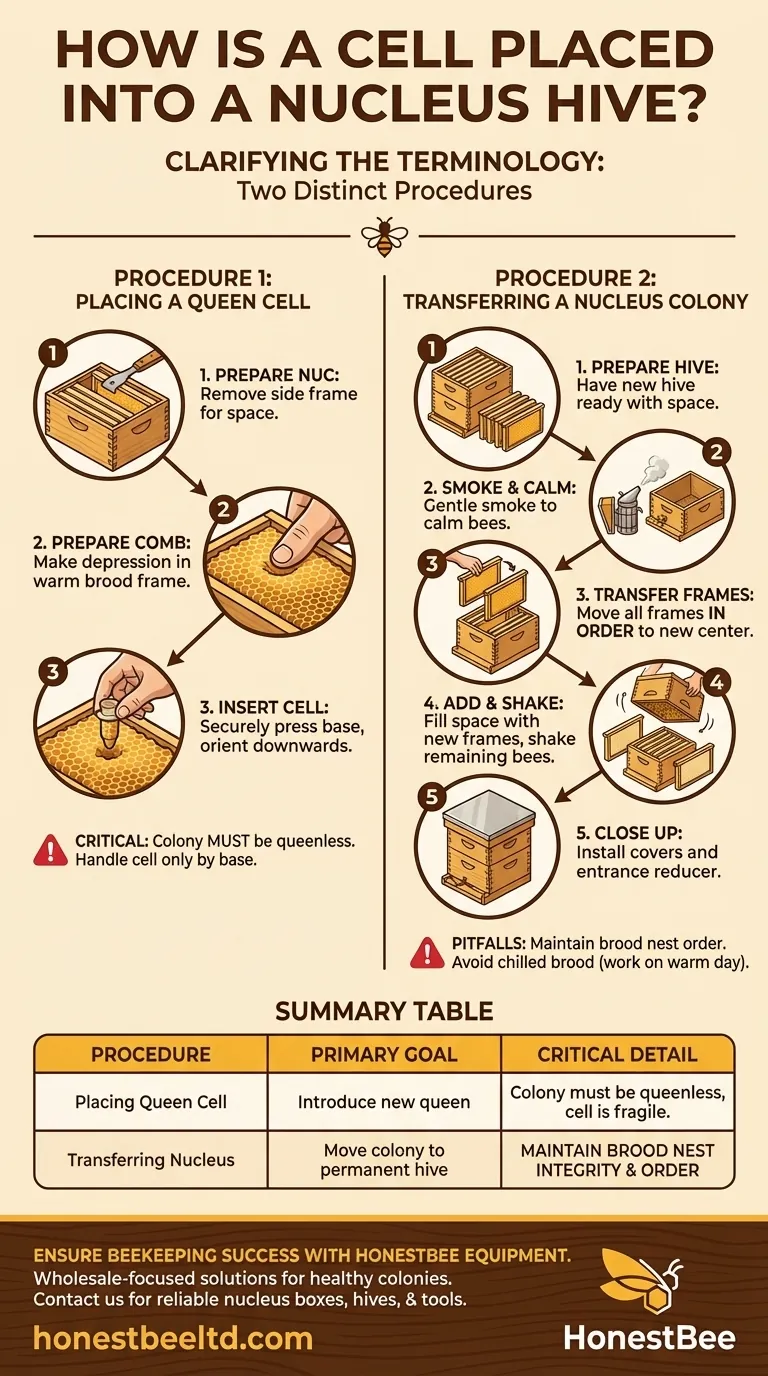
Related Products
- 5 Frame Wooden Nuc Box for Beekeeping
- Professional Galvanized Hive Strap with Secure Locking Buckle for Beekeeping
- HONESTBEE Professional Entrance Bee Feeder Hive Nutrition Solution
- No Grafting Queen Rearing Kit: System for Royal Jelly Production and Queen Rearing
- Versatile Ratchet Hive Strap with S-Hooks for Secure Fastening
People Also Ask
- How many frames does a typical wooden nuc box hold? A Guide to Choosing the Right Size
- What is the advantage of overwintering a nucleus? A Strategic Asset for Beekeeping Success
- What are the benefits of using nucs for beginning beekeepers? Ensure a Successful First Hive with a Head Start
- What are the benefits of moving nuclei around the apiary? Master Strategic Hive Management
- How should the nuc be installed in the apiary? Ensure Colony Success from Day One








